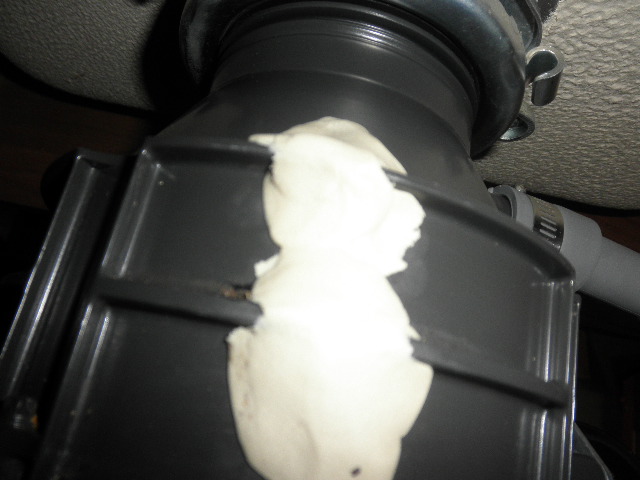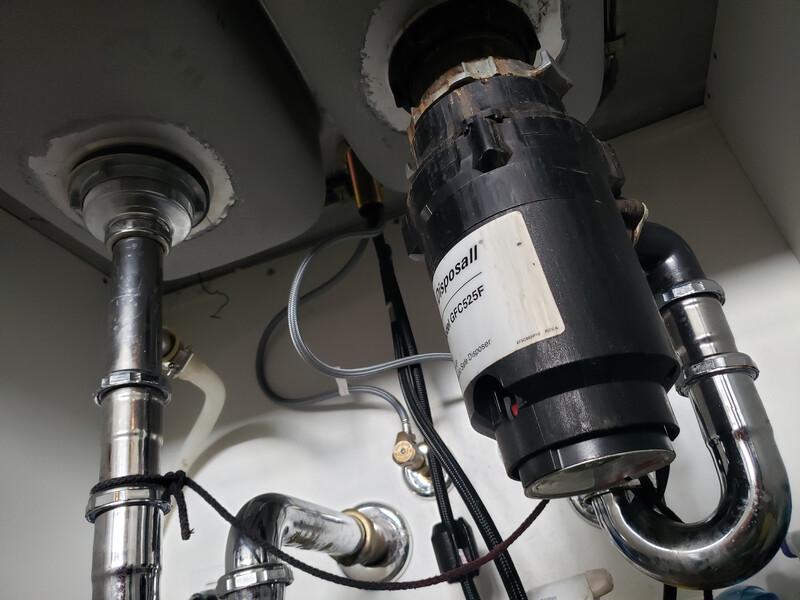Straightforward Ways to Repair a Leaky Waste Disposal Unit
Straightforward Ways to Repair a Leaky Waste Disposal Unit
Blog Article
This article down below pertaining to How to fix a pretty consistent leak from my garbage disposal is totally compelling. Don't miss it.

Waste disposal unit are vital kitchen appliances that aid in disposing of food waste successfully. Nonetheless, a leaking waste disposal unit can be an irritating and unpleasant issue to take care of. Luckily, many leakages can be repaired conveniently with a couple of simple actions. In this short article, we will certainly talk about just how to repair a dripping garbage disposal successfully.
Introduction
Garbage disposals are mounted under kitchen sinks and are made to shred food waste right into smaller items, allowing it to pass through the pipes system conveniently. While these devices are usually reputable, leakages can take place in time because of damage, loose connections, or damages to the unit.
Usual Root Causes Of Leakages in Garbage Disposals
Worn Seals and Gaskets
Seals and gaskets play a crucial role in avoiding water from dripping out of the waste disposal unit. With time, these elements can deteriorate, leading to leakages around the disposal device.
Loose Links
The connections in between the waste disposal unit and the pipes system can end up being loose in time, causing water to leakage out during operation.
Cracks or Openings in the Disposal System
Physical damage to the waste disposal unit, such as cracks or holes in the real estate, can likewise result in leakages.
Determining the Source of the Leakage
Before attempting to repair a leaking waste disposal unit, it is necessary to determine the source of the leak. This can generally be done through visual assessment or by performing simple tests.
Visual Examination
Evaluate the garbage disposal system carefully for any type of indications of water leakage. Pay very close attention to areas around seals, gaskets, and connection factors.
Testing for Leakages
One means to examine for leaks is by running water with the disposal device and looking for any type of noticeable indicators of leakage.
Tools and Products Needed for Fixing a Leaking Garbage Disposal
Prior to starting the fixing process, gather the needed devices and materials, consisting of a screwdriver, adjustable wrench, plumbing technician's putty, substitute seals or gaskets, and epoxy or patching material for fixing splits or openings.
Step-by-Step Guide to Repairing a Dripping Waste Disposal Unit
Switch off the Power
Prior to trying any kind of repairs, make certain that the power to the garbage disposal device is turned off to stop the risk of electrical shock.
Locate the Leak
Recognize the precise place of the leakage and figure out the reason.
Tighten up Connections
Make use of a wrench to tighten up any type of loose connections between the disposal system and the pipes system.
Change Seals or Gaskets
If the leakage is because of worn seals or gaskets, eliminate the old parts and replace them with new ones.
Patching Cracks or Holes
For fractures or holes in the disposal unit, usage epoxy or an appropriate patching product to secure the damaged location.
Testing the Garbage Disposal After Repair
Once the repair work is total, check the garbage disposal by running water through it to ensure that the leakage has actually been settled.
Preventive Upkeep Tips to Prevent Future Leaks
To prevent future leakages, it is important to carry out normal maintenance on your garbage disposal. This consists of maintaining it clean, staying clear of putting non-food things or difficult things down the disposal, and regularly looking for leaks or other concerns.
Conclusion
Finally, repairing a dripping garbage disposal is a fairly uncomplicated process that can be finished with standard devices and materials. By following the steps laid out in this article and practicing precautionary maintenance, you can maintain your garbage disposal in good working problem and prevent expensive fixings in the future.
HERE’S HOW TO FIX YOUR GARBAGE DISPOSAL
WHAT TO DO IF SOMETHING IS STUCK IN YOUR GARBAGE DISPOSAL
If the impeller won’t turn, there’s probably something stuck in the disposal. It could be a steak bone or peach pit, although plumbers report pulling all sorts of inappropriate objects out of disposals, such as bottle caps or aluminum foil. Make sure power to the disposal is off, and look inside to see if you can see the source of the jam.
Never stick your fingers in a disposal. Pull out anything you see with tongs or pliers.
If the disposal still won’t work, it may be time to call a plumber or consider buying a new disposal. GEM Plumbing & Heating is here for all of your garbage disposal needs.
WHAT TO DO IF YOUR GARBAGE DISPOSAL DRAIN IS CLOGGED
Take everything out from underneath your sink and put a bucket or other container under your disposal to catch any water that drains out. Disconnect your disposal from the power supply. If it’s plugged into a wall outlet, unplug it. If it’s hardwired into an electrical box, go to the electrical panel and turn off the breaker for the disposal. Pour ¼ cup of baking soda into the drain, followed by ½ cup of white vinegar. Give the solution a few minutes to fizz and do its work. Look into the disposal with a flashlight to see if you can see an object that might be causing the clog. If you see it, remove it using tongs or pliers. MORE TIPS ON DEALING WITH A CLOGGED GARBAGE DISPOSAL
Never use drain cleaner in a garbage disposal. It can damage the plastic parts inside the disposal. You can also be splashed with the caustic liquid while working to clear the clog. Beware! Never stick your fingers into a garbage disposal. Trust us — not a good idea. In many instances, your dishwasher drains through your garbage disposal. This allows the disposal to grind any large food particles that may be drained out of your dishwasher. There are some jurisdictions, however, where the plumbing code prohibits such a connection. WHAT TO DO WHEN YOUR DISHWASHER DRAINS THROUGH THE DISPOSAL
Run some water in the sink so your plunger has at least a ½-inch of water to create a seal and plunge vigorously up and down several times. You may need to repeat this several times. Run hot water down the drain to clear any residue that remains.

I hope you enjoyed reading our section on Why Is . Thanks a ton for taking the time to read through our piece of content. For those who enjoyed reading our post please do not forget to share it. Bless you for your time. Come back soon.
Or Book Technician Here Report this page